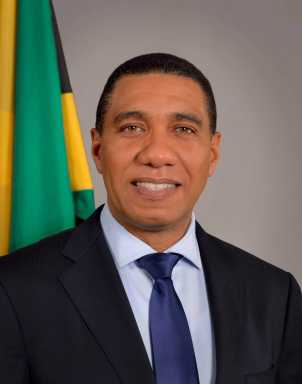Listeners:
Top listeners:
-
play_arrow
RadioJLR Just Press Play
Nonprofit group homes in New York face funding shortfall, leading to staffing crisis

Almost anyone who works in a group home in New York will say that it is a labor of love.
They do it for the smiles they get from bringing their developmentally disabled clients out for a sparkly manicure or whipping up their favorite meals at night. They do it for a ‘thank you’ they hear from a mostly nonverbal resident after helping them get dressed in the morning.
One thing they do not do this critical work for is a competitive salary. According to politicians, caregivers and other advocates, the money simply is not there—a nonprofit funding shortfall that has led to low pay, high turnover and staffing shortages.
Caregivers who work in group homes provide much-needed help for people of all ages who have mental illness or intellectual/developmental disabilities (I/DD). Despite their important roles, direct support professionals (DSPs) face ongoing salary challenges that stem in part from a lack of funding.
Critical care, but not enough help

DSPs help vulnerable patients with their everyday needs and care. They provide assistance with personal care, skills development, job coaching, and sometimes even fighting for the rights of those with disabilities. But the salaries in New York are not as rewarding as the work itself—at least not for those who work for non-profit organizations rather than state-run residences.
Tarina Webb, a residential coordinator for AHRC NYC who works in several group homes in Gramercy Park, the East Village, and the West Village, knows about this salary disparity all too well. The homes she works in have nine to twenty residents. The largest program is designed to have 12 staffers, but it does not always work out that way.
“So we have intermittent shortages,” she said. “We’re having issues with retention right now. It’s a big issue.”
Webb’s group homes are co-ed and provide housing for adults who function at different levels, many needing help with everyday tasks.
“It could be anything that you and I do at our homes, like meal preparation, eating, cleaning,” she explained. “Some need assistance with showers, dressing and undressing.”
Staff work in shifts around the clock. The ratio is usually three residents to one DSP.
“But when there are staff shortages, you take on more because you don’t have the people that you need,” Webb said.
As much as her staff loves their work—helping people is their passion—the turnover rate is very high. Other group home workers told amNewYork that many DSPs only stay in the field for about one to two years before leaving. The disparity between the pay and work, many say, is enough to keep them quitting.
Group homes in New York: The pay
According to the job site Indeed, the average starting salary in New York for DSPs in the nonprofit sector is around $18.34 an hour, though many are as low as $17 an hour — only 50 cents higher than NYC’s minimum wage. But those wages jump to around $25 an hour for positions in state-operated community residences, which are managed by the NYS Office of Mental Health (OMH).
NYS recognizes the staffing shortage. In March 2024, it launched a recruitment campaign, More Than Work, jointly with voluntary providers. State sources said the campaign has driven nearly 55,000 potential job candidates to the 234 participating service providers advertising open positions to date.
Fixing the toilet to avoid a hospital visit
Meanwhile, research from the Council of Nonprofits shows funding and support for nonprofits are ongoing issues. In fact, according to the council, seven out of 10 nonprofits anticipated charitable giving to decrease or remain flat in 2023. Couple that with low pay and hard work that includes physical labor, and it’s a recipe for a staffing shortage.
Monifa Walcott is a DSP who was recently promoted to assistant supervisor at a group home in Queens managed by the nonprofit YAI. She does “boots on the ground” work with staff caring for eight adult residents ranging in age from 27 to 80. In addition to providing one-on-one care and managing administrative tasks such as scheduling, she’s also the home’s handywoman.
“After we finish this call, I have to go fix the toilet,” she said. “The toilet seat broke. I have to see if we can get a new one because it’s on the first floor. We have two residents who are unable to ambulate by themselves, so they need support from us. If the toilet is not secure, it could be a very serious situation.”
A serious situation that could even lead to a hospital visit, creating more problems not only for the injured resident but everyone left behind at home.
“It would bring staff out of the house, which would then be lacking support,” she explained.
Despite the staffing issues, Walcott and her team still ensure time to make life as fun for the residents as possible.
“We do their hair. Sometimes we take them out to get their nails done. We take them to the salon. We have two females in here and we try to keep them as girly as possible,” she said with a chuckle.
Birthday parties are part of the fun, too.
“It warms my heart to make them happy,” Walcott said.
‘Essential’ workers
Shayne Tavares, a supervisor at the same YAI group home, said DSPs are essential. In fact, the organization has advocated for the workers by pushing for Medicaid rate increases with the state legislature and governor, and has consistently “mobilized hundreds” of staff, families and other supporters to rally for DSP wages.
“DSPs are essential,” Tavares said. “They are the foundation of the work that we do as a whole. They are the ones who are hands-on engaging with the people, giving support, making sure their needs are being taken care of.”
But as needed as they are, the staffing crisis is alive and well at YAI.
“It has been difficult as of late especially because the cost of living has went up,” Tavares added. “And the field doesn’t pay competitively. It’s a crisis because there are people who want to get into the field to work as a DSP or in the I/DD field in general, but they may not be as interested because it does not pay as much as something else.”
Funding for nonprofit group homes
Families do not pay to place their loved ones in group homes. In fact, many residents do not even have family available to care for them. Their medical needs are typically paid for by government programs such as Medicaid, which provides health insurance and access to long-term care for nearly 7 million New Yorkers.
Manhattan Assembly Member Rebecca Seawright, chair of the assembly’s aging committee and former chair of the people with disabilities committee, said retaining staff at nonprofit-run group homes would be improved if the salaries were higher.
Last month, she reintroduced A7604, a bill to provide wage enhancements for DSP workers.
“New York’s delicate infrastructure of care for people with disabilities and/or older adults rests on the shoulders of nonprofit direct service professionals,” she said, adding that they deliver 85% of services to most New Yorkers with I/DD.
Seawright explained that most nonprofit-based DSPs earn 30% less than their government-funded peers and echoed what many others in the nonprofit sector have said: Low pay and hard work have led to a turnover rate of nearly 30%.
“This disparity goes against our values of equity and fair play while degrading the quality of care for our most vulnerable loved ones and neighbors,” she said. “I also advocated for a cost-of-living adjustment and will continue to fight for our DSPs, the compensation they deserve, and to stabilize the system of care.”
Walcott, of YAI, said she understands why the low salary forces compassionate workers out of a field that they love.
“We have lives outside of here,” she said. “We have bills and stuff like that. A lot of us keep coming back because we enjoy working with each other and making the people happy. But we get a quick turnover because the money is not making ends meet.”
How NYS is helping
Jennifer O’Sullivan, director of communications for the NYS Office for People with Developmental Disabilities (OPWDD), said that the state’s DSPs are the heart of the agency’s service system, supporting 130,000 people with developmental disabilities every day.
“Under Gov. Kathy Hochul’s leadership, the OPWDD remains focused on growing the number of direct support professionals statewide and improving retention,” she said.
Since 2022, she explained, NYS has made more than $3.9 billion available to nonprofit providers to support investments in the workforce and decrease pay disparity. This funding includes about $1.4 billion in one-time federally-approved bonuses, nearly $1.3 billion through four consecutive initiatives that recognize inflationary pressures, and over $340 million through state-funded bonus initiatives.
“Most recently, the governor has invested $850 million to fund rate increases for certified providers, the bulk of which are intended to be used to increase salaries,” O’Sullivan said.
Written by: Adm
Similar posts
© 2025. All Rights Reserved by Radio-JLR


